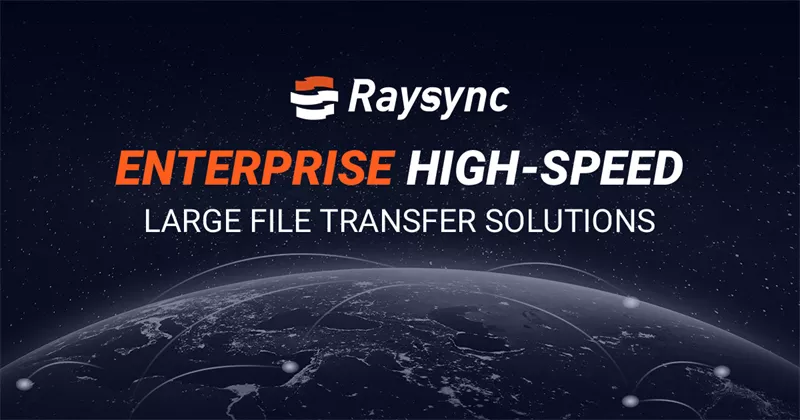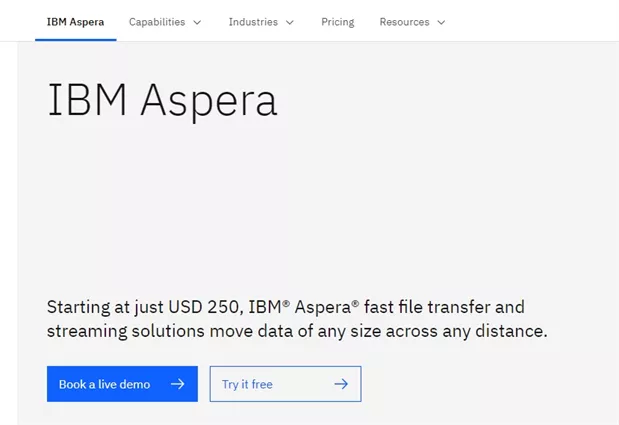An Expanded Definition of UDP File Transfer in 2025
May 29, 2024In the ever-evolving landscape of digital communication, UDP (User Datagram Protocol) file transfer stands out as a beacon of speed and efficiency.

In this comprehensive guide, we'll unravel the secrets behind UDP file transfer in 2025, delving into its definition, applications, and recommended solutions for optimized performance.
Part 1: Definition of UDP File Transfer Protocol
The UDP File Transfer Protocol (UFTP), in both general and specific senses, builds upon the User Datagram Protocol (UDP). Here's how they relate:
UDP as the foundation: UDP provides the core functionality for UFTP. It breaks data down into packets and transmits them over the network without any guarantees of delivery or order. This speed is what makes UFTP attractive for certain file transfers.
UFTP adds functionalities on top of UDP: While UDP offers the basic transport, UFTP adds features specifically for file transfer. This can include:
- In general UFTP: Techniques for handling large files, potentially splitting them into smaller packets and reassembling them at the receiving end.
- In specific UFTP (by Dennis Bush): functionalities for multicast transfers, allowing sending to multiple destinations simultaneously.
Analogy:
- Think of UDP as a simple truck that can haul cargo (data) quickly but doesn't care if everything arrives or in the right order.
- UFTP is like a delivery company that uses those trucks but adds features like packaging, tracking, and potentially multi-drop off points (in multicast UFTP) to ensure the cargo (file) gets delivered effectively.
Part 2: What Is UDP File Transfer
UDP file transfer refers to using the User Datagram Protocol (UDP) to transmit files over a network. It's a trade-off between speed and reliability.
Here's the breakdown:
- Speed: UDP excels in speed because it doesn't establish a connection or confirm delivery for each data packet. It just fires them off, making it faster than protocols like TCP (Transmission Control Protocol) that prioritize reliability.
- Less Reliable: The downside is that there's no guarantee the data arrives correctly or at all. Packets can get lost or jumbled during transmission. This might not be a big deal for a short video call, but for a critical file transfer, errors could corrupt the data.
- Use Cases: Large file transfers on high-bandwidth networks: When you have a super-fast internet connection and speed is the priority, UDP file transfer can be advantageous. For instance, transferring large media files between data centers.
- Real-time applications: UDP is often used in applications where a slight delay is noticeable but occasional data loss is tolerable. Examples include live streaming, online gaming, and voice calls over IP (VoIP).
Part 3: How UDP File Transfer Differs from Other File Transfer
UDP file transfer differs from other file transfer methods in a key aspect: prioritization of speed over guaranteed delivery. Here's a breakdown of the key differences:
Reliability:
- UDP: Less reliable. Packets can be lost or arrive out of order with no mechanism to ensure they arrive or are retransmitted. This is suitable for real-time applications where a slight glitch is acceptable but not for critical file transfers.
- Other protocols (e.g., TCP): More reliable. They establish a connection, check for errors, and resend lost packets, ensuring complete and accurate data delivery. This is ideal for standard file transfers where data integrity is crucial.
Speed:
- UDP: Faster. By skipping connection setup and error checking, UDP prioritizes speed. This is beneficial for large file transfers on high-bandwidth networks where speed is the main concern.
- Other protocols (e.g., TCP): Slower. The extra steps for reliability add some overhead, making transfers slightly slower.
Connection:
- UDP: Connectionless. It simply sends data packets without establishing a dedicated connection, similar to sending postcards.
- Other protocols (e.g., TCP): Connection-oriented. They set up a dedicated connection like a phone call, ensuring a reliable pathway for data transfer.
Use Cases:
- UDP: Ideal for real-time applications like video streaming, online gaming, and VoIP calls where a slight delay is tolerable but occasional data loss is acceptable. It can also be useful for large file transfers on high-bandwidth networks where speed is a priority.
- Other protocols (e.g., TCP): Used for most file transfers (FTP, SFTP, etc.) where data integrity is crucial and occasional slowdowns are acceptable for a complete and accurate transfer
Here's an analogy:
Imagine sending a document across town.
- UDP: You write the document, address it, and throw it in the mail. It might arrive quickly, but there's a chance it gets lost or arrives with some pages missing.
- Other protocols (e.g., TCP): You use a registered mail service that ensures the document reaches its destination complete and undamaged, but it might take a bit longer.
Part 4: Which Industry Is Suitable for Using UDP File Transfer
Several industries can benefit from UDP file transfer, especially when prioritizing speed over guaranteed delivery. Here are some prominent examples:
- Media and Entertainment
- Healthcare
- Scientific Research
- Finance
- Content Delivery Networks (CDNs)
General points to consider for UDP file transfer suitability:
- Network quality: UDP performs best on high-bandwidth, reliable networks where data loss is unlikely.
- Data criticality: If data corruption is unacceptable, UDP might not be suitable.
- Error handling mechanisms: When using UDP, it's important to have mechanisms in place to detect and potentially recover from data loss.
It's important to remember that UDP is just one tool in the toolbox. The most suitable file transfer method depends on the specific needs and priorities of the situation.
Part 5: 3 UDP File Transfers Recommended for Enterprise
In the dynamic realm of technology, advancements and innovations continuously redefine the landscape of UDP file transfer solutions.
While the top three solutions outlined provide exemplary performance and reliability, it's crucial for organizations to stay attuned to emerging trends and developments.
1. File Transfer over UDP - Raysync
Raysync's robust UDP file transfer solution excels in facilitating large-scale data transmission. Leveraging intelligent routing, protocol optimization, and encryption, Raysync ensures rapid and secure file transfer over UDP, catering to diverse enterprise needs.
Its user-friendly interface and comprehensive support make it an attractive choice for businesses seeking reliable and efficient file transfer capabilities.

2. Resilio
Resilio offers a peer-to-peer file synchronization and transfer solution powered by UDP for efficient data exchange.
With its resilient architecture and decentralized approach, Resilio is well-suited for distributed environments and bandwidth-intensive applications, ensuring seamless file transfer experiences.
Its adaptive bandwidth management and robust data integrity checks make it a preferred choice for organizations needing efficient and scalable file transfer solutions.

3. Aspera
Aspera's UDP-based file transfer solutions are tailored for high-speed data movement, particularly in media and entertainment, healthcare, and research sectors.
Employing patented FASP® (Fast, Adaptive, Secure Protocol) technology, Aspera achieves exceptional transfer speeds over long distances and challenging network conditions, ensuring optimal performance.
Its ability to handle large files and maintain high transfer rates even under suboptimal network conditions makes it indispensable for industries requiring reliable and fast data transfer.

Part 6: FAQs about UDP File Transfer
If you have any questions related to UDP file transfer, here is something you definitely look at.
1. Can UDP Be Used for File Transfer
Yes, UDP is suitable for file transfer, especially in scenarios prioritizing speed over reliability. It is particularly useful for applications where minor data loss is acceptable, and speed is crucial.
2. What Is the Difference Between TCP and UDP File Transfer
TCP offers reliable, connection-oriented communication with error checking and retransmission mechanisms, whereas UDP prioritizes speed over reliability without guaranteed delivery or error correction.
This makes TCP suitable for applications requiring data integrity, while UDP is ideal for real-time applications where speed is more critical.
3. What Is a UDP File
A UDP file refers to a file transfer using the UDP protocol, operating at the transport layer of the OSI model, providing a connectionless communication service. This type of file transfer emphasizes rapid delivery and is used in scenarios where quick transmission is more important than absolute reliability.
Conclusion
As we traverse through 2025, UDP file transfer remains a cornerstone in industries requiring swift data transmission. Despite its trade-offs in reliability, UDP-based solutions power critical applications like media streaming, content delivery, and distributed computing, driving efficiency in the digital realm. By grasping the nuances of UDP file transfer and adopting recommended solutions, organizations can navigate the digital landscape with unparalleled speed and agility.
You might also like

Industry news
July 22, 2020Under the circumstances, the enterprise needs an easy-to-use, secure, and reliable file synchronization software.

Industry news
July 14, 2020It's time to say goodbye to the traditional ways. With Raysync, it's never been so easier to transfer large files at such a high speed than ever.

Industry news
June 23, 2022Secure file transfer is information sharing via a new secure, reliable delivery method. Here are 5 secure file transfer service for your business. Click here to get more!